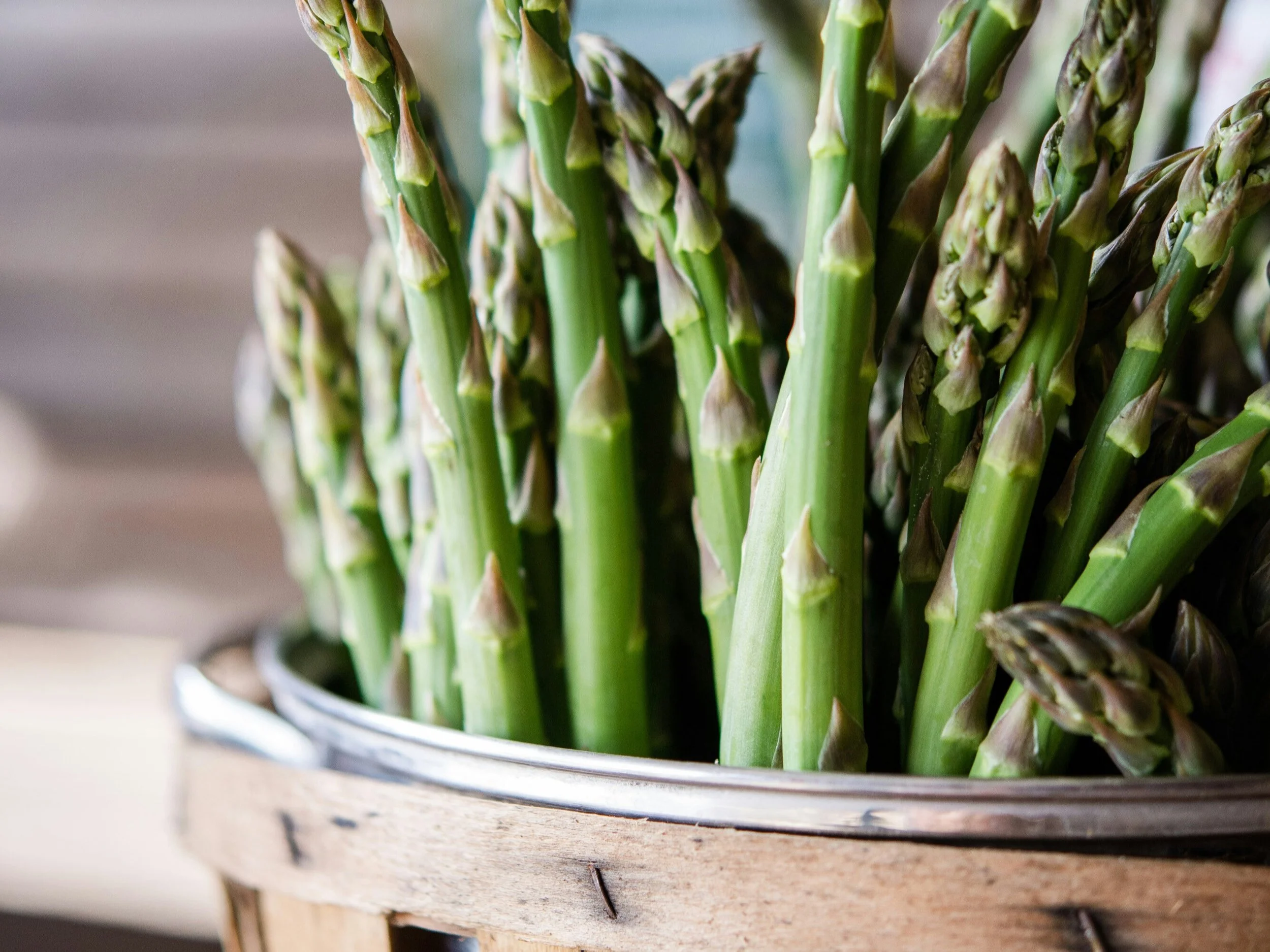Growing Asparagus: Patience, Preparation, and Perfection
I dream of abundant asparagus harvests!
Asparagus is a perennial vegetable known for its crisp, tender shoots that signal the arrival of spring. Revered for its flavor and nutritional value, asparagus has been cultivated for thousands of years. Growing asparagus in your garden is a long-term commitment, but the rewards are well worth the wait. With proper planning, care, and patience, you can enjoy fresh asparagus year after year.
A Brief History of Asparagus
Asparagus (Asparagus officinalis) is believed to have been cultivated as far back as 3000 BC by the Egyptians, and it was also a favorite of the ancient Greeks and Romans (1). Its name comes from the Greek word "asparagos," meaning "sprout" or "shoot." Today, it remains a popular vegetable across the globe, praised for its delicate flavor and health benefits, as well as the onset of spring.
How to Plant and Care for Asparagus
Growing asparagus begins with patience. Asparagus crowns, which are the roots of the plant, are typically planted in early spring. Choose a sunny spot with well-draining soil, as asparagus thrives in sandy, loose soil with a pH level of 6.5 to 7.5 (3).
Planting:
Dig trenches about 12–18 inches apart and 6–8 inches deep.
Place crowns in the trench, spreading the roots out evenly.
Cover with two inches of soil and water well.
As shoots emerge, gradually fill the trench with soil, keeping the tips exposed until the trench is level with the ground.
Spacing:
Allow about 18 inches between each crown. Asparagus is a long-term investment; it can remain productive for 15–20 years if cared for properly (3).Watering & Fertilizing:
Asparagus is relatively drought-tolerant, but regular watering during dry spells ensures thicker spears. Fertilize in early spring with a balanced fertilizer, and again after the harvest period ends.
Wild that these funny-looking things grow to be asparagus!
The Speed of a Stalk
Asparagus is known for its remarkable growth rate. Under optimal conditions, an asparagus stalk can grow up to seven inches in a single day (3). This rapid growth means that daily harvesting is sometimes necessary during the peak growing season to prevent stalks from becoming tough and woody.
Planning Space in Your Garden
Given its perennial nature, asparagus requires a dedicated space. When planting, consider that it will occupy that space for decades! Raised beds are ideal, as they improve drainage and make harvesting easier. However, I use my raised beds for annual vegetables, and planted my asparagus in the ground. Just ensure it’s in an area where it won't be disturbed by other garden activities (3).
Companion Planting
Asparagus pairs well with certain plants that enhance its growth and deter pests. Some ideal companion plants include:
Tomatoes: Repel asparagus beetles.
Basil and Parsley: Improve flavor and deter harmful insects.
Marigolds: Ward off nematodes and pests (5).
Strawberries: Like the same growing conditions as asparagus.
Avoid planting asparagus near onions, garlic, and potatoes, as they compete for nutrients (4).
The Patience of Growing Asparagus
One of the key lessons in growing asparagus is learning patience. You won’t harvest any spears during the first two years of growth. This is a time to watch your asparagus carefully, enjoy its quick growth, and understand its lifecycle, not a time to harvest. This waiting period is crucial for the plant to establish deep roots, ensuring vigorous growth for many seasons to come (3). Full production typically begins in the third year.
Harvest spears when they are about 6–8 inches tall (3), using a sharp knife or garden shears.
Spring and Fall Maintenance
Spring:
Remove mulch as new spears emerge, weed carefully, and fertilize.Fall:
After the growing season, allow the ferns to turn yellow and die back naturally. This helps the crowns store energy for next year. Cut back dead foliage in late fall to prevent disease. Apply mulch to protect the crowns over winter (3).
Asparagus beginning to go to their fern stage.
Troubleshooting Tips
Thin Spears: May indicate overcrowding or nutrient deficiencies in an established bed. Thin plants and fertilize.
Yellowing Ferns: This can be caused by poor drainage or root rot. Ensure the soil is well-draining.
Asparagus Beetles: Hand-pick beetles or use organic insecticides if necessary (3, 5).
Thanks for reading! If you’re inspired to deepen your plant-based journey or cultivate your gardening skills, I’m here to support you. Explore personalized coaching, workshops, and more on my Experiences page. Let’s grow together!
References
Wikipedia contributors. Asparagus. Wikipedia. https://en.wikipedia.org/wiki/Asparagus. Published May 13, 2025. Accessed May 14, 2025.
Damiano J. Asparagus in the garden takes its time but is worth the wait. AP News. https://apnews.com/article/a917e81827895692afbe26e985f4287f. Published April 17, 2025. Accessed May 14, 2025.
The Spruce Editors. How to plant, grow, and harvest asparagus. The Spruce. https://www.thespruce.com/how-to-plant-and-grow-asparagus-1402814. Published 2005. Accessed May 14, 2025.
Wikipedia contributors. List of companion plants. Wikipedia. https://en.wikipedia.org/wiki/List_of_companion_plants. Published March 1, 2025. Accessed May 14, 2025.
Better Homes & Gardens Editors. 10 best asparagus companion plants to grow together. Better Homes & Gardens. https://www.bhg.com/asparagus-companion-plants-7371307. Published March 10, 2023. Accessed May 14, 2025.



